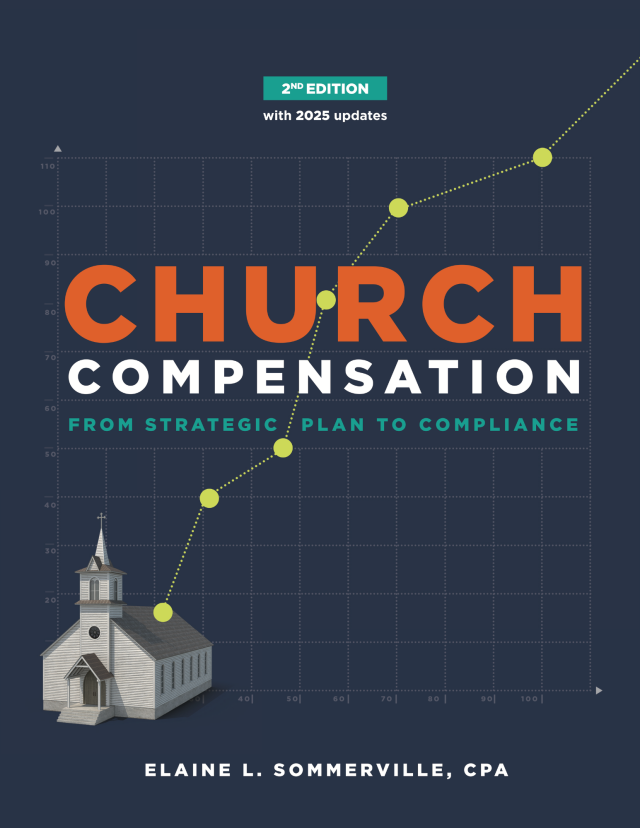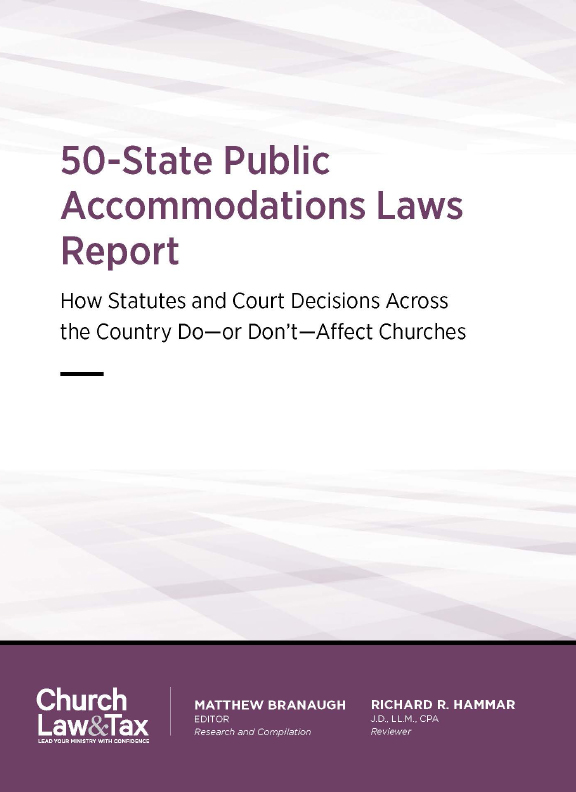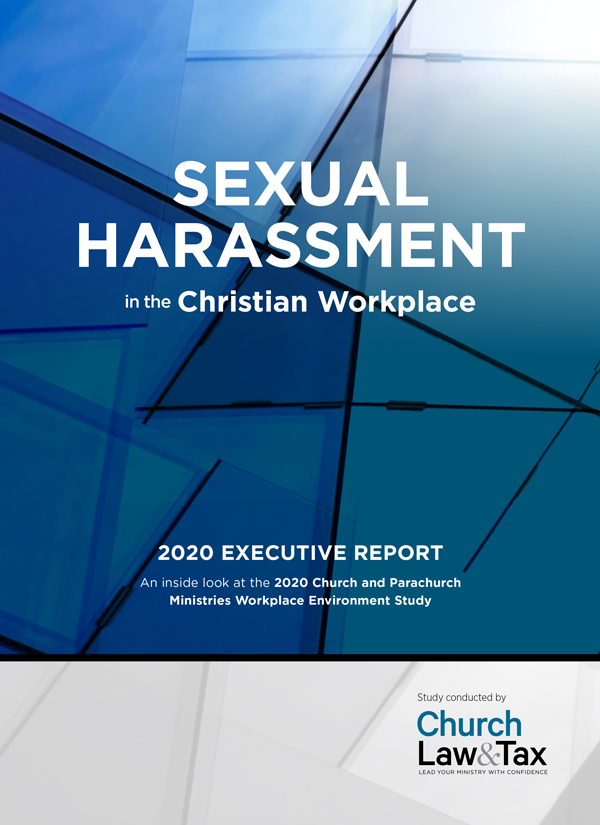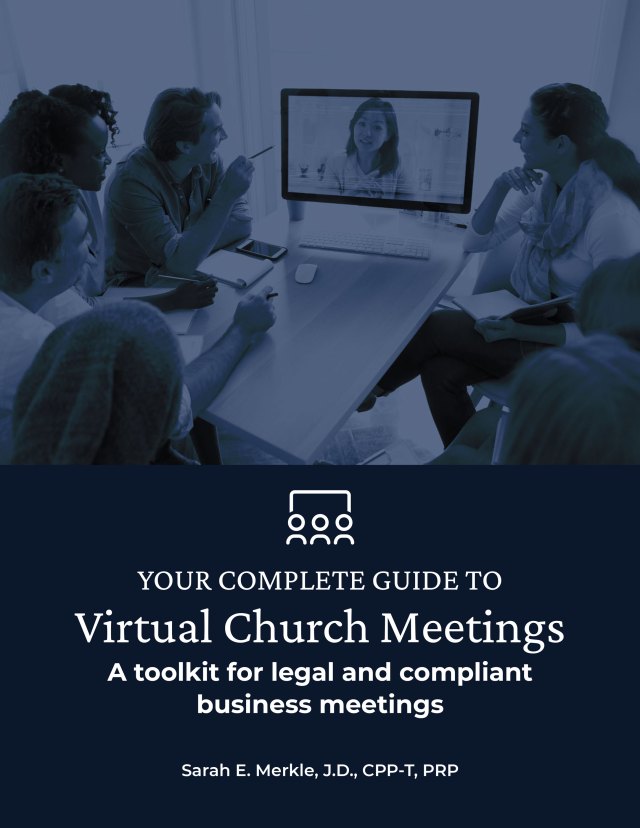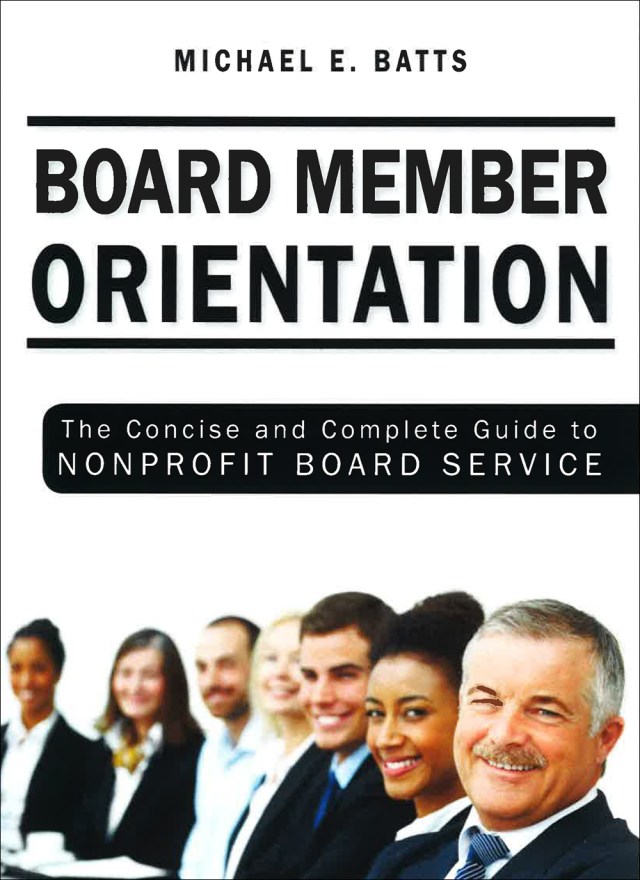Editor’s Note: On April 6, 2023, an Ohio appeals court affirmed the trial court’s decision to dismiss this case based on the ministerial exception doctrine. “We agree that this is precisely the kind of state inquiry into church employment decisions that the First Amendment forbids,” the appellate court noted in its 18-page decision.
It continued:
Our review of the record and case law convinces us that the trial court’s determination that the ministerial exception prevents application of a secular review and analysis of such claims in this case without engaging in “excessive entanglement” with the ecclesiastical inner workings of the church was supported by competent, credible evidence, and the trial court properly determined that the ministerial exception stripped it of jurisdiction to consider [plaintiffs’] claims that the church had violated state employment laws.
Montgomery v. St. John’s United Church of Christ, 2023 WL 2820472 (Ohio 2023)
Key Point 8-12.5 . Sexual harassment is a form of sex discrimination prohibited by Title VII of the Civil Rights Act of 1964. It consists of both “quid pro quo” harassment and “hostile environment” harassment. Religious organizations that are subject to Title VII are covered by this prohibition.
An employer is automatically liable for supervisory employees’ acts of harassment, but a defense is available to claims of hostile environment harassment if the employer has adopted a written harassment policy and an alleged victim fails to pursue remedies available under the policy.
In some cases, an employer may be liable for acts of sexual harassment committed by nonsupervisory employees, and even nonemployees.
An Ohio court ruled that it was barred by the ministerial exception from resolving a pastor’s sexual harassment claim against her church.
A pair of plaintiffs sued a church and its board president
This case involved allegations of employment-related sexual harassment asserted against a church (“Church”) ’and its board president (“President”) by a female minister (“Minister”) and a pastoral assistant (“Assistant”).
The Minister was employed at the Church from November 2014 until July 2019.
The Assistant was employed from September 2017 until April 2019.
The plaintiffs alleged that they were subjected to sexual harassment by the President individually and in his church leadership capacity and that, as a result of the acts of harassment, a hostile work environment was created. Plaintiffs further alleged that, as a result of their objecting to and resisting these acts of sexual harassment, their employment was terminated.
The Minister also separately alleged that she was terminated as a result of age and sex discrimination because the Defendants wanted to hire a younger, male minister.
In support of her sexual harassment claim, the Minister recounted inappropriate language of a sexual nature by the President at a church conference in 2018, in three telephone calls, and a few conversations in the church parking lot.
However, she admitted the President never:
- spoke to her in a sexual way about having sex with her,
- sexually propositioned her or asked her to have a sexual relationship with him,
- indicated that any kind of sexual activity was required to keep her job,
- touched her in any unwanted manner,
- asked her about her own sex life, and
- threatened her in any way.
Further, there was no evidence that the Minister ever reported any sexually harassing behavior to anyone at the church.
The Assistant recounted similar claims of inappropriate sexual conversations with the President.
In connection with their discrimination claims, Plaintiffs sought a “permanent injunction prohibiting the defendants from engaging in any policy or practice which discriminates on the basis of sex and age.” Plaintiffs also asked the court to “order the defendants to make plaintiffs whole by rehiring them and restoring any seniority with appropriate back pay, front pay and benefits.”
Plaintiffs’ lawsuit also asserted a cause of action for assault and battery against the President individually, as well as a claim of defamation against both Defendants.
In their defamation claim, Plaintiffs alleged that Defendants knowingly published false statements about them and about the reasons for their termination of employment, reflecting poorly on their character and damaging their reputation in the community and impairing their ability to obtain employment.
Plaintiffs alleged these statements were made with malicious intent.
The Minister’s employment was terminated on July 9, 2019, by a written agreement entitled Agreement for Dissolution and Termination of a Pastoral Relationship. The agreement provided for two months of severance pay plus benefits, along with a release of claims by the Minister. That release language reads as follows:
“The minister, acknowledging receipt of financial payments under this agreement, covenants and agrees that he/she waives all rights to demand and/or secure a civil court and/or a jury trial with respect to adjudication of the matters contained in this Dissolution and Termination Agreement, in matters that pertain to her ministry in the church and/or the negotiations that have led up to this agreement.
It is understood that this Dissolution and Termination Agreement is a final disposition of all matters between the pastor and the congregation. This Dissolution and Termination Agreement contains the entire agreement between the parties hereto and any representations made before or during negotiation are hereby merged in their entirety and this Agreement may not be modified.
The undersigned parties have negotiated this Agreement in good faith and have every intention of being in fulfilling it and further agree to the releases contained herein, representing that they understand its contends [sic] and sign it as their own free act after a full review of the contents.”
The document was approved by the church board on July 8, 2019. It was signed on July 9, 2019, by the president and the church board’s vice president, by church executive committee members, by the church treasurer, and by the Minister.
Does the ministerial exception apply?
The Defendants argued that the Plaintiffs’ claims were barred by the ministerial exception. The court observed:
“The [ministerial exception] doctrine shields religious employers from employment discrimination lawsuits brought by their ministers. Rooted in the First Amendment’s Establishment and Free Exercise Clauses, the exception ensures that the authority to select and control who will minister to the faithful—a matter strictly ecclesiastical—is the church’s alone.For the ministerial exception to apply, the employer must be a religious institution and the employee must have been a ministerial employee. It is undisputed that [the Church] is a religious institution and that [the Minister] is a ministerial employee. …
With regard to [the Minister] it is undisputed that she is an ordained minister. She had performed weddings and funerals and provided pastoral care prior to her employment [with the Church]. She became a member of the church in 2014 and began working as a “pastoral care assistant” in 2018. In that “pastoral” capacity, she ministered to the elderly and homebound members of [the Church], calling them, visiting them, praying with them, informing them about happenings at the church, and so forth.
If [the Minister] was unable to meet with parishioners, [the Assistant] would take on some of [the Minister’s] duties, meeting with parishioners in nursing homes and hospitals, providing pastoral care by phone or in person, giving “solace and comfort” and fulfilling the mission of the church through these pastoral and ministerial duties.
On at least one occasion [the Assistant] led a sermon before the congregation. [The Assistant] was also taking courses to become ordained through the [church’s denomination], and she was a member of the church governing body (the Church Board) where she was in charge of outreach and missions.
Based on the scope and nature of her work, it is clear that [the Assistant] performed primarily religious functions (as opposed to secular), and she regarded herself as being engaged in pastoral, ministerial work. Furthermore, she had received and was continuing to receive specialized religious training, she performed certain “key functions” as an assistant to [the Minister], and she served as an active and visible messenger of the church’s mission and outreach. Clearly, [the Assistant] satisfies numerous factors deemed pertinent by the [United States] Supreme Court in Hosanna-Tabor Evangelical Lutheran Church & School v. E.E.O.C., 565 U.S. 171 (2012) and undoubtedly qualifies as a “ministerial employee” so as to trigger the application of the ministerial exception.”
As ministerial employees, both Plaintiffs’ claims of wrongful termination based on sex discrimination “are explicitly barred by the ministerial exception as mandated by the clear authority of the United States Supreme Court in Hosanna-Tabor Evangelical Lutheran Church & School v. E.E.O.C., 565 U.S. 171 (2012).”
Accordingly, the Ohio court entered summary judgments as a matter of law for both Defendants on the wrongful termination claim.
Court: Ministerial exception bars hostile work environment claims
The Plaintiffs also claimed that they were victims of the Defendants’ sexual harassment based on a hostile work environment.
Are such claims also barred by the ministerial exception? The court concluded that they were, too.
The court noted that “it is settled that the Establishment and Free Exercise Clauses of the First Amendment bar suits brought on behalf of ministers against their churches, claiming termination in violation of employment discrimination laws.” However, “where the claim is one involving discrimination based on a hostile work environment (without necessarily a wrongful termination), there is a split of authority as to whether the ministerial exception should still bar the claim.”
The court noted that the United States Supreme Court “has not directly ruled on this issue,” but it discussed the ways the Hosanna-Tabor decision could inform its ruling here:
In the Hosanna-Tabor case the Supreme Court ruled that the First Amendment bars suits “claiming termination in violation of employment discrimination laws,” the Court also ruled that the ministerial exception precludes application of employment discrimination laws to claims concerning the employment relationship between a religious institution and its ministers.
The phrase “and other employment discrimination laws” would appear to include the laws which form the basis of Plaintiffs’ claims herein. Moreover, it is clear that Plaintiffs’ claims herein “concern the employment relationship.”
Therefore, it is undisputed that Plaintiffs’ hostile work environment claims herein are claims brought pursuant to an “employment discrimination statute”.
Moreover, since Plaintiffs seek, in connection with their workplace discrimination claim, a permanent injunction prohibiting the [Defendants] from engaging in any policy or practice which discriminates on the basis of sex and age and also seek an order requiring Defendants to make plaintiffs whole by rehiring them and restoring any seniority with appropriate back pay, front pay and benefits it is abundantly clear that Plaintiffs’ hostile work environment claims are profoundly entangled with, and explicitly implicate, the employment relationship between Defendants and two of its “ministers”, and such claims are therefore barred by the ministerial exception.
In this case, the Plaintiffs did not allege a “quid pro quo” claim of sexual harassment, but a hostile work environment claim. In order to establish a claim of hostile work environment sexual harassment, a plaintiff must show:
(1) that the harassment was unwelcome, (2) that the harassment was based on sex, (3) that the harassing conduct was sufficiently severe or pervasive to affect the terms, conditions, or privileges of employment, or any matter directly or indirectly related to employment, and (4) that either (a) the harassment was committed by a supervisor, or (b) the employer, through its agents or supervisory personnel, knew or should have known of the harassment and failed to take immediate and appropriate corrective action.
The Ohio court concluded that “the evidence that has been submitted to the Court … clearly establishes that the Court cannot evaluate or adjudicate the hostile work environment claims without excessively entangling itself in the religious workings of the church and the ecclesiastical domain.”
What about the release agreement?
Defendants also asserted that the Minister’s claim was barred as a matter of law by virtue of the Agreement for Dissolution that she signed. The court agreed. It noted that the Agreement
“ … is plainly supported by consideration in the form of two months of severance pay plus benefits, and it contains a release of claims against the Church. In the Agreement, [the Minister] “covenants and agrees that she waives all rights to demand and/or secure a civil court and/or a jury trial with respect to adjudication of the matters contained in this Dissolution and Termination of a Pastoral Relationship Agreement in matters that pertain to her ministry in the church. …”
The Agreement by its very title … evinces its purpose, which is to memorialize a termination of [the Minister]’s employment as [the Defendants]’ pastor. Therefore, the release language contained therein waiving civil court claims as to “the matters contained in this Dissolution and Termination Agreement, in matters that pertain to her ministry in the church” clearly refers to matters relating to her employment with the Church. No other interpretation can be credibly argued.”
The court noted that an executed release is “ordinarily an absolute bar to a later action on any claim encompassed within the release.” Therefore, the court concluded that the Agreement constituted a “clear and unambiguous contract between [the Minister] and the church, and that [the Minister] has released and waived any future claims with respect to matters pertaining to her employment and ministry there.”
[The Minister] attempted to avoid the Agreement on the ground that she had no opportunity to review it and was therefore reluctant to sign it. The court rejected this argument, citing the “parol evidence rule.” The parol evidence rule
is a rule of law that prohibits a party who has entered into a written contract “from contradicting the terms of the contract with evidence of alleged or actual agreements. … [When] two parties have made a contract and have expressed it in a writing to which they have both assented as the complete and accurate integration of that contract, evidence … of [prior] understandings … will not be admitted for the purpose of varying or contradicting the writing. … Therefore, in accordance with well-settled law, the Court will not consider such evidence.”
What this means for churches
This case is important for the following reasons:
1. It demonstrates that the ministerial exception may preclude sexual harassment claims by ministerial employees against their church.
2. It discusses the possible relevance of the parol evidence rule. Your church leaders likely are not familiar with this rule, but it does have potential relevance to any church that fails to include all material terms of a contract and the contract itself.
The important point to note is that the clear meaning of a contract cannot be altered by external evidence outside of the contract itself.
The takeaway point here is that church leaders should take steps to ensure that all material terms are in fact recited in contractual documents that are signed on behalf of the church. Oral understandings of the parties’ intent will not be allowed to alter the meaning of the terms and conditions reflected in a contract.
This rule often comes as a shock to one or both parties to a contract, but note that it can be avoided by a careful reading of any contract prior to signature to ensure the inclusion of all material terms.
3. This case demonstrates the importance of the legal concept of “consideration” in evaluating contracts and agreements. The court noted that the Agreement signed by the Minister and the church “was plainly supported by consideration in the form of two months of severance pay plus benefits.” Consideration, like the parol evidence rule, is a legal doctrine that is not well understood by church leaders. But it should be, since unfamiliarity with it can result in significant liability.
What is consideration, and why is it important?
Consideration is a fundamental requirement in any contract. For a contract to be legally enforceable, each party agrees to do something and must receive something of value in exchange. That “something of value” is called consideration. There is no enforceable contract without it.
Montgomery v. St. John’s United Church of Christ, 2022 Ohio Misc. LEXIS 32 (Ohio App. 2022)
